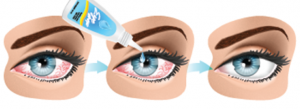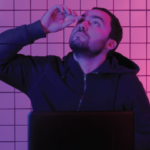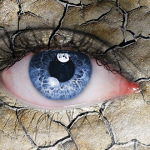
TeraVector / shutterstock.com
Dry eye affects at least 30 million people in the U.S. and many more around the globe. Among patients with autoimmune disease—including Sjögren’s syndrome and rheumatoid arthritis—that number can climb even higher.
Although dry eye may sound like just an annoyance, it can range from mildly irritating to debilitating, depending on the extent of the symptoms. That’s why ophthalmologists who treat patients for dry eye, including those with concurrent rheumatic disease, welcome recent treatment advances. For many years, dry eye patients received only over-the-counter artificial drops and, perhaps, cyclosporine eye drops (Restasis). Now, a growing host of anti-inflammatory drops, as well as other treatments, are available.
Ophthalmologists also now have a better understanding of dry eye causes and its diverse presentations, says Bennie H. Jeng, MD, professor and chair in the department of ophthalmology and visual sciences at the University of Maryland School of Medicine, Baltimore. In fact, information was recently published in 11 articles authored by members of the Dry Eye Workshop (DEWS) II, led by the Tear Film and Ocular Surface Society. The articles from the report are available for free and published in several langages.1
“Dry eye treatments have evolved significantly in the last decade,” Dr. Jeng says. “We have a better understanding of the pathophysiology of the disease, and we have new technology to diagnose and treat it.”
Increased attention has been placed on how dry eye can impede results after refractive or cataract surgery, leading to a greater interest in treating these patients. “A refractive surgery consult today includes a detailed evaluation of the patient’s ocular surface,” says Joseph S. Schmutz, MD, of the Excel Eye Center, Provo, Utah.
New Dry Eye Treatments
The following are among the most talked-about dry eye treatment advances:
- More anti-inflammatory eye-drop choices—Since 2004, Restasis eye drops have been synonymous with dry eye treatment, and the drops had no competitors for many years. That changed when the anti-inflammatory lifitegrast ophthalmic solution (Xiidra) was approved by the U.S. Food and Drug Administration (FDA) in mid-2016. More recently, a more potent form of cyclosporine drops, called Cequa, was approved by the FDA and is expected to become commercially available early this year.
- TrueTear neurostimulator—Taking a different approach, the TrueTear neurostimulator provides low-level neurostimulation through the nose, which sends an afferent signal via the ethmoidal branch of the ophthalmic division of cranial nerve V to the brain to help stimulate the lacrimal glands. This can lead to patients producing their own tears. Although neurostimulation has been used for a long time in other specialties, it is a new concept for ophthalmology. Patients can control the amount of charge they receive and use the device several times a day, says John Sheppard, MD, president of Virginia Eye Consultants in Norfolk, Va.
- Autologous serum tears—Today more ophthalmologists are willing to work with a lab to process a patient’s blood and create autologous serum tears for severe dry eye patients. Although no randomized clinical trials exist to gauge their effectiveness, a number of ophthalmologists, including Dr. Jeng, have anecdotally found the tears effective. “The presence of nutrients and growth factors allows healing to take place,” says Inna Ozerov MD, of the Miami Eye Institute, Hollywood, Fla.
- The first approved treatment for neurotropic keratitis—This degenerative corneal disease results from impaired corneal innervation. Although it is technically not dry eye, this condition may be part of the differential diagnosis in severe disease. Cenegermin (Oxervate) was approved in 2018 and is a neurotrophic growth factor proven to reverse the disease in less than eight weeks, Dr. Ozerov says.
- Expanded treatments for meibomian gland dysfunction—Many cases of dry eye are thought to be linked to meibomian gland dysfunction (MGD), or a blockage of the glands on the upper or lower eyelids. By treating MGD, physicians aim to relieve dry eye symptoms. “New treatments include meibomian gland expression, either through LipiFlow or other devices, and intense, pulsed light therapy,” Dr. Schmutz says.
- Other dry eye treatments under development—These include a crosslinked hyaluronic acid eye drop, a sustained-release dexamethasone-loaded punctal plug, the aldehyde trap inhibitor reproxalap and others. Although omega 3 oral supplementation has been frequently recommended to patients with dry eye, DREAM, a randomized, controlled trial published in 2018, reported that dry eye patients using supplementation did not have better outcomes than those who did not use it. However, some physicians still recommend it.2
In Your Office
The various new dry eye treatments can potentially help rheumatologists even if they are not the prescribing physicians, says Anca D. Askanase, MD, MPH, director and founder of Columbia University Lupus Center, and associate professor of medicine in the rheumatology division at Columbia University Irving Medical Center, New York. “Rheumatologists should know the medications for keratoconjunctivitis sicca [dry eye] and work with ophthalmologists to ensure the best therapy for it. Additionally, other eye manifestations of rheumatic diseases can complicate the picture. A quick referral to ophthalmology can prevent long-term complications,” she says.
“Dry eyes create discomfort and affect visual acuity,” says rheumatologist Vivian Bykerk, MD, Hospital for Special Surgery, New York. “Effective therapies could help alleviate this.” Dr. Bykerk recommends a trial of over-the-counter tears to patients who complain of some dry eye symptoms, but if symptoms persist, she refers the patient to an ophthalmologist.
Vanessa Caceres is a medical writer in Bradenton, Fla.
Funding Notes
The TFOS DEWS II was supported by unrestricted donations from Alcon, Novartis, Shire, Allergan, Bausch+Lomb, Akorn, CooperVision, Dompé, Horus Pharma, Lμbris BioPharma, Oculeve, TearLab, Laboratoires Théa, SIFI, Sun Pharma, Johnson & Johnson Vision Care, Carl Zeiss Meditec, Quint Health, Scope Ophthalmics and Senju.
References
- Nelson JD, Craig JP, Akpek EK, et al. TFOS DEWS II Report. Ocular Surface Journal. 2017 Jul.
- Asbell PA, Maguire MG, Pistilli M. N-3 fatty acid supplementation for the treatment of dry eye. N Engl J Med. 2018 May 3;378(18):1681–1690.


